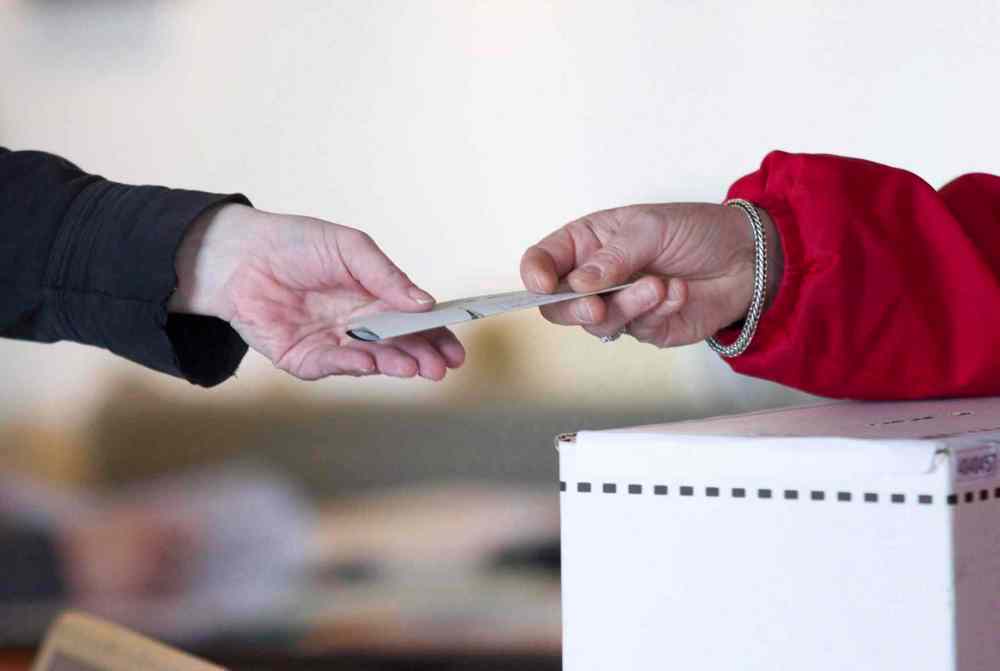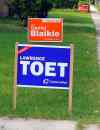Voting 101: the mechanics of running an election
Advertisement
Read this article for free:
or
Already have an account? Log in here »
To continue reading, please subscribe:
Monthly Digital Subscription
$0 for the first 4 weeks*
- Enjoy unlimited reading on winnipegfreepress.com
- Read the E-Edition, our digital replica newspaper
- Access News Break, our award-winning app
- Play interactive puzzles
*No charge for 4 weeks then price increases to the regular rate of $19.00 plus GST every four weeks. Offer available to new and qualified returning subscribers only. Cancel any time.
Monthly Digital Subscription
$4.75/week*
- Enjoy unlimited reading on winnipegfreepress.com
- Read the E-Edition, our digital replica newspaper
- Access News Break, our award-winning app
- Play interactive puzzles
*Billed as $19 plus GST every four weeks. Cancel any time.
To continue reading, please subscribe:
Add Free Press access to your Brandon Sun subscription for only an additional
$1 for the first 4 weeks*
*Your next subscription payment will increase by $1.00 and you will be charged $16.99 plus GST for four weeks. After four weeks, your payment will increase to $23.99 plus GST every four weeks.
Read unlimited articles for free today:
or
Already have an account? Log in here »
Hey there, time traveller!
This article was published 17/10/2015 (3671 days ago), so information in it may no longer be current.
OTTAWA — When the writ is dropped, officials at Elections Canada headquarters have a few days to ship out thousands of boxes of preprogrammed computers, phones, printers and detailed manuals to returning officers in 338 ridings across the country.
“Every single thing in the process is spelled out in legislation or is part of the administrative latitude the chief electoral officer has,” said James Hale, a regional media adviser for Elections Canada. “There is nothing left to chance.”
Hale says it takes a small army to pull off a federal election. Elections Canada hires 338 returning officers, who in turn hire 250,000 people to staff returning offices throughout the writ period and polling stations on election day. The base pay was around $24,000 for a normal 37-day election, and was increased for the longer writ period.

Workers at polling locations — who help people register, give out ballots and help count them at the end of the day — are paid from $13.10 to $21 an hour depending on their responsibility. The workday can last 14 hours. There are no scheduled breaks until after the polls close.
Hiring that many people is onerous, and Elections Canada is still looking to fill gaps in some ridings. The law requires the office to start by asking the parties that finished first and second in the riding in the last election to submit names for positions. Once those lists are exhausted, the jobs are open to the public. Workers must be Canadian, at least 16 years old and live in the riding. Good organizational skills and being analytical are assets.
Voters arriving at a polling location on voting day will be greeted by an information officer, who must determine if the voter has proper identification. If not, the voter will be directed to the registration officer for help.
If the voter does, they will be sent to the polling station where their name will be marked off on the list of electors. The voter will be handed a ballot and directed to vote behind a cardboard voting booth.
Each voter marks a ballot with an X, returns it to the poll clerk, who will remove the attached barcode used to track the number of ballots handed out, and give the ballot back. The voter puts it into the ballot box.
Canada’s elections are low-tech, something Hale says serves us well.
Every polling station has one ballot box per station, every ballot box is sealed and signed by the returning officer and the seal isn’t broken until the ballots are counted after polls close.
Ballots cast on election day are counted on-site at each poll. Ballots cast at advance polls are counted at returning offices. Ballots cast by mail are counted at Elections Canada headquarters in Ottawa.
Hale warned that, given the number of close races expected and the number of advance ballots cast, counting and getting results may take longer this year.
How the ballots are counted, who gets to watch and how the results are recorded and reported are carefully spelled out. It involves many reports, sealed envelopes and signatures all to make sure the number of ballots counted matches the number of voters who showed up.
Everything is delivered to the returning officer for the riding, who must validate the results within seven days. Votes are only ever recounted in the presence of a judge and only if the winner’s margin of victory was 0.1 per cent or lower.
Once the election is over, returning officers shut their offices and ship the equipment back to Ottawa. Ballots are kept for 10 years in a secure Elections Canada facility.
mia.rabson@freepress.mb.ca









